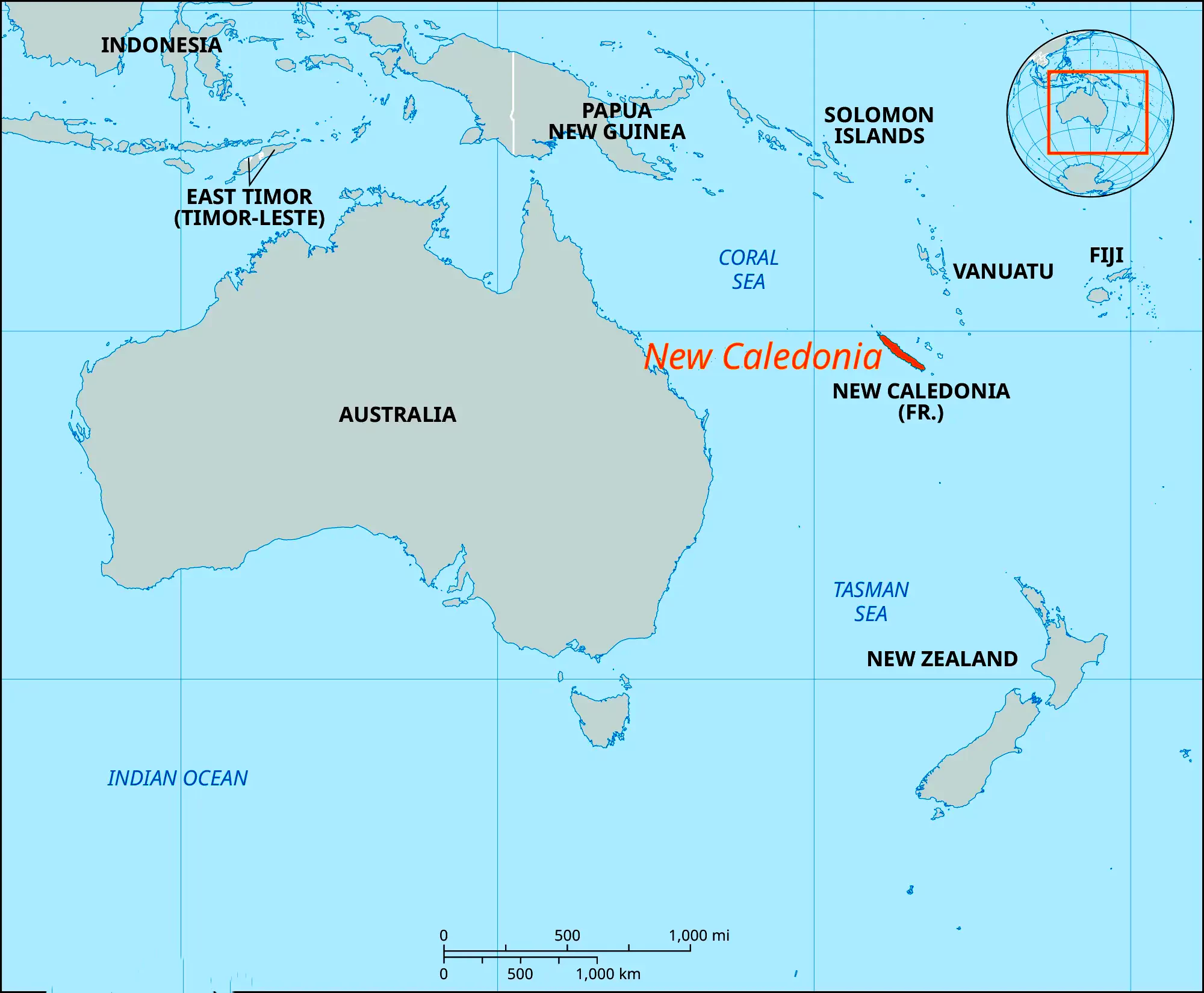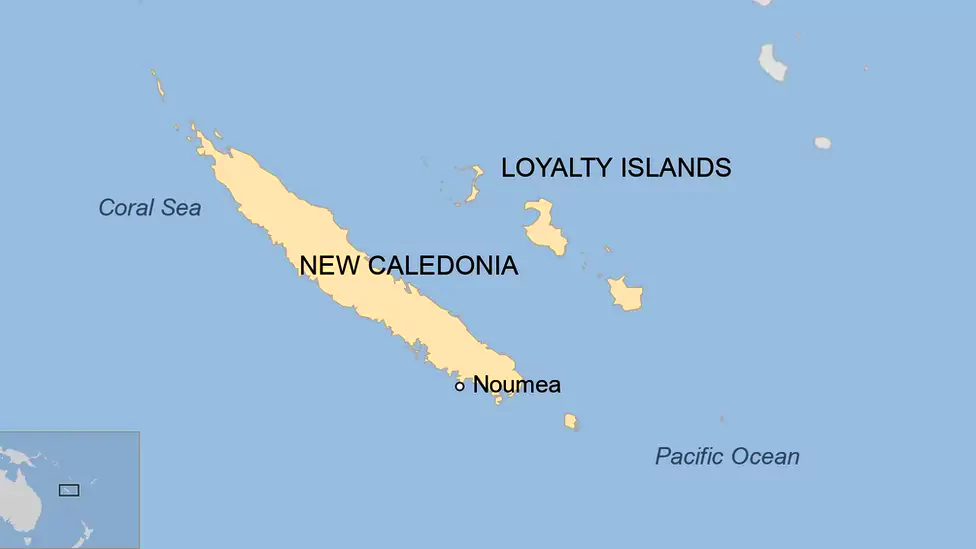Context
French security forces are intensifying efforts to regain control over New Caledonia, a French Pacific archipelago, amid ongoing and deadly unrest.
About New Caledonia
New Caledonia is a French overseas territory in the Pacific. It enjoys a large degree of autonomy but depends heavily on France for matters like defense and education.
Enroll now for UPSC Online Course
- British explorer James Cook named the island New Caledonia in 1774 after the Latin name for Scotland.
 It was annexed by France in 1853 and New Caledonia became a French overseas territory in 1946.
It was annexed by France in 1853 and New Caledonia became a French overseas territory in 1946.- Geographical Overview: It includes the island of New Caledonia where the capital, Noumea, is located, the Loyalty Islands; the Belep Islands; and the Ile des Pins.
- The Loyalty Islands account for more than one-tenth of New Caledonia’s total land area and about one-tenth of the population.
- In contrast to the island of New Caledonia, these islands are raised coral plateaus.
- UNESCO World Heritage site: New Caledonia’s lagoons, with their diverse reefs and associated ecosystems, were designated a UNESCO World Heritage site in 2008.
- Relief: Rugged mountain ranges, consisting principally of metamorphic rock formations, divide the island into an east coast, which in many places descends precipitously to the sea, and a west coast, which slopes more gradually and contains basically flat but undulating land.
 Drainage: Diahot River is the longest river in New Caledonia.
Drainage: Diahot River is the longest river in New Caledonia.- Ethnicity: Melanesians make up more than two-fifths of the population and Europeans about one-third.
- Their differing cultures have given rise to two distinct ways of life, known as kanak and caldoche:
- The kanak identity is based on clan membership, a network of family alliances and specific land rights.
- The caldoche way of life is integrated into a cash economy.
- Resources: It is rich in resources and accounts for around 10% of the world’s nickel reserve, according to the Australian Trade and Investment Commission.
![]() 22 May 2024
22 May 2024
 It was annexed by France in 1853 and New Caledonia became a French overseas territory in 1946.
It was annexed by France in 1853 and New Caledonia became a French overseas territory in 1946. Drainage: Diahot River is the longest river in New Caledonia.
Drainage: Diahot River is the longest river in New Caledonia.